Tour de France: 100 Tours, 1,000 stories

The Tour de France is Wimbledon, the Ashes and the FA Cup final all rolled into one huge, mobile athletic extravaganza.
It's the world's toughest mainstream sporting event, but it transcends sport - as well as showing which cyclist can cover the race route in the shortest time, it's also an advertising vehicle, showcase for the landscape and cities of France (and elsewhere) and an opportunity for thousands of holidaymakers to line the roadside and become part of the colour of the Tour.
Above all, the Tour's biggest selling point is its creation of a narrative. The unfolding, three-week stories, the dramatic tension between the leading characters and the constantly changing backdrop are what draw the public to the Tour and, after 99 events, interest in the race is at an all-time high.
The event may have swapped heavy, single-geared bikes and gravelly, unmade tracks for lightweight space-age technology, and roads so smooth the riders seem to glide over them, but the Tour will always be, and has always been, about the stories.
And just as the technology of the race has evolved, the way the stories have been told has moved with the times. When the race was launched, in 1903, the only way of communicating events was through newspapers.
The newspapers are still there, but through the last century, colour photography, radio, television and the internet have all reinvented the Tour, renewing its vigour, and changing the way it is understood. Here, we look back at the iconic events and personalities of the Tour, and how those stories have been told.
1903-world war two - The newspaper era
There's nothing unusual about newspapers covering sporting events, but the relationship between the Tour and newspapers is especially intimate.
The latest race content, interviews, features, reviews and expert buying guides, direct to your inbox!
The race was devised by staff at L'Auto newspaper (which later became L'Equipe) as a way of driving sales. Point-to-point races were nothing new, but the idea of linking a series of point-to-point races into a stage race was revolutionary and it caught the public's imagination.
The race was a true Tour de France, circumnavigating the country from Paris. Local people felt ownership of the race as it passed through their region, and as it progressed, they got hooked on the narrative.
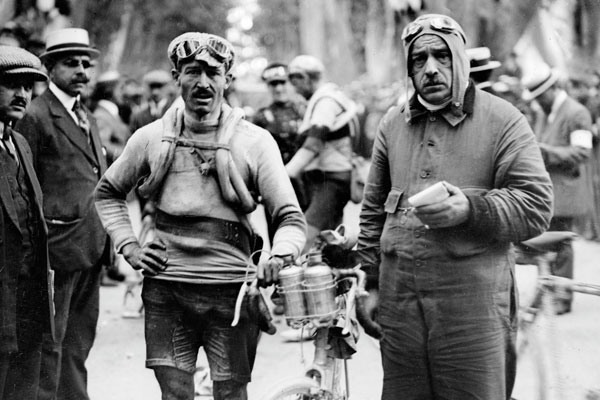
In 1920, things were very different...
Maurice Garin of France won in 1903. Tactics were a lot simpler in those days - the riders essentially put their heads down and hammered their way round France as fast as possible. Riders who abandoned the first Tour were allowed to take part in the rest of the race, but would not be included in the general classification.
Garin took the first stage, a 467-kilometre monster, in 17 hours 45 minutes, a minute clear of Emile Pagie in second, and a full 21 hours faster than last-placed Eugene Brange.
The cheating champ
For his efforts in 1903, Garin won 6,000 old francs, a significant amount of money for someone who worked as a chimney sweep. It was enough to tempt him back for a defence the following year, and, it seems, enough to justify taking the train for part of the route, a ruse which gained him enough time to win again.
He was disqualified, leaving 19-year-old Henri Cornet as the champion. The race was only two years old, and two things had happened that would remain the case to the present day - first, it had already become France's most important sporting event, and second, the riders had discovered cheating.
Although the organisers had threatened to stop running the race after 1904's scandals, the Tour continued to grow. It expanded into the high mountains in 1910, with a stage through the Pyrenees, and by the 1920 event the Tour had its first three-time winner, Belgian Philippe Thys.
Both these events fuelled popular interest in the Tour - the journalists of L'Auto wrote florid, exaggerated accounts, in heroic prose, of the riders' exploits in the mountains, and the public loved it (journalists from other publications weren't allowed to cover the race until 1921).
The heroic loser
French rider Eugene Christophe, the first rider to wear the yellow jersey when it was introduced in 1911, was challenging in 1913 before his bike broke in the Pyrenees. The rules dictated absolute self-sufficiency, so he carried his bike for two hours to a blacksmith to weld and forge a new fork.
He'd lost all hope of victory, but the Tour organisers still docked him a further three minutes for allowing somebody to pump the smith's bellows while he worked.
The incident caught the public imagination more than if Christophe had actually won the race - he's the spiritual ancestor of Raymond Poulidor and Thomas Voeckler, who both demonstrated that losing with drama and style gains more popularity in France than winning.
Between the Wars, the race continued to grow - with car and transport technology improving, the Tour started picking up an entourage of vehicles, allowing photographers and journalists to reach parts of the race that were inaccessible before.
At least fact started to overtake fiction as the primary basis of the Tour's narrative (although even now, the latter has survived in the form of press releases from teams' publicity departments).
The 1950s - The colourphotography era
Just as the Second World War divided old Europe from modern Europe, its conclusion ushered in a new era in the Tour. It became more recognisably the Tour as we understand it from the perspective of 2013, in terms of its structure. Stages became shorter, speeds increased and team tactics became more important.
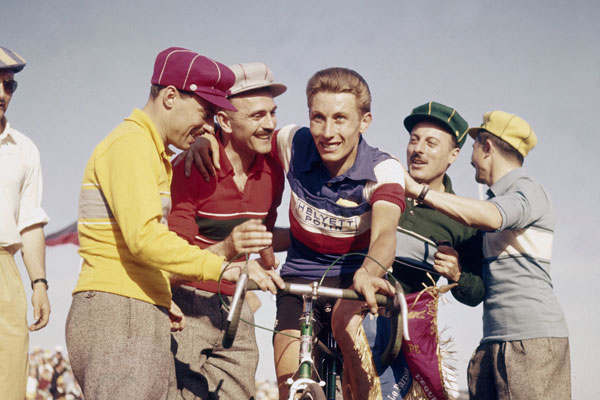
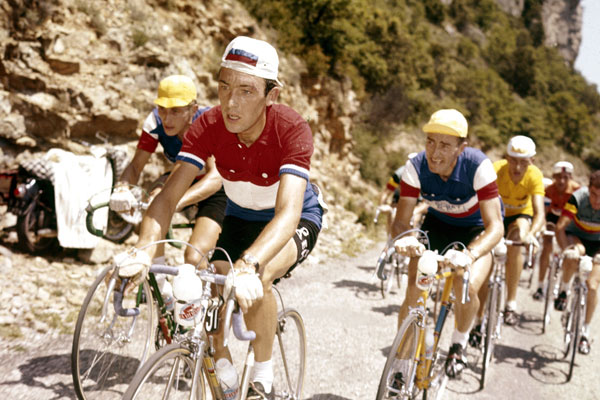
Italians Gino Bartali and Fausto Coppi won four Tours between them up to 1952, but there's still something epic and mysterious about their victories - captured in black and white, they looked like throwbacks to the pre-War years, even though Coppi's racing and riding style, and attitudes, were distinctly modern.
But the first modern hero of the Tour, with a distinct iconography, was Breton three-time winner Louison Bobet. Bobet's wins in 1953, ‘54 and ‘55 coincided with colour photography and printing becoming more common. Suddenly, the Tour looked modern, colourful and fast, while the yellow jersey went from being an abstract concept to the definitive, tangible symbol of the race.
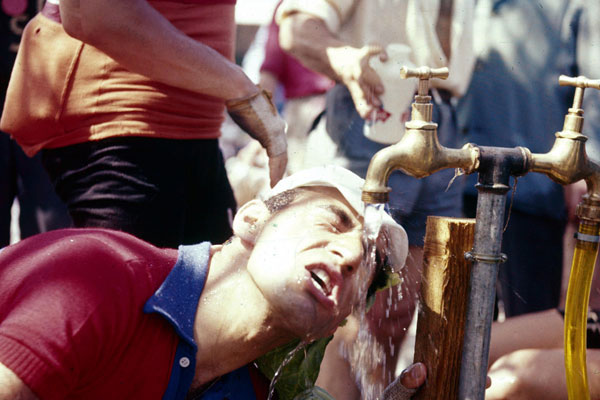

1960-1990s - The radio and television era
Although live radio broadcasts had been used to transmit the Tour since the 1920s, the 1960s saw radio, then television coverage of the race come of age. By the mid-1960s, there was daily coverage, which brought the riders a step closer to the public.
Luckily, this period coincided with one of the greatest rivalries the Tour has ever seen, between Jacques Anquetil and Raymond Poulidor. The two riders demonstrated more than any other how the French sports fan sees the world - the more Anquetil won, the more the public rooted for plucky underdog Poulidor, and the less Anquetil understood it. By the time it was five-nil to Anquetil, Poulidor's place in the hearts of the French public was sealed.
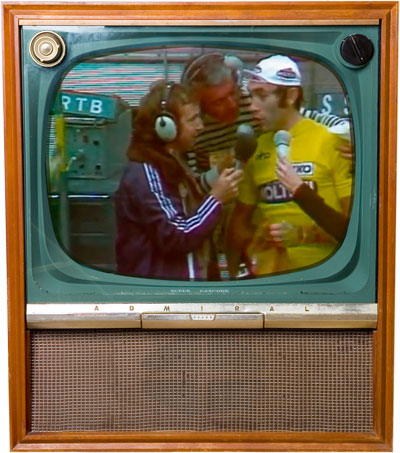
Their final great head-to-head, on the Puy de Dôme in the 1964 Tour, when an exhausted Anquetil bluffed his way up, clashing elbows with Poulidor, gave the Tour an iconic image and a compelling story. Just to rub it in, Anquetil competed in the 1966 Tour, and helped Lucien Aimar to victory, rather than allow Poulidor the chance to finally win. It didn't matter - Poulidor remains a television personality to this day, his failure to win the Tour or even wear the yellow jersey converted into a marketable asset.
Cannibals and Badgers
The 1960s, 1970s and 1980s weren't just the decades during which the Tour was beamed into the living rooms of every French household and beyond in Europe, they also coincided with the reigns of three five-time winners - Anquetil, then Eddy Merckx between 1969 and 1974, and Bernard Hinault between 1978 and 1985.
Each had implacable will to win and each demonstrated character flaws that would normally be seen as unhealthy. They were all egomaniacs - Anquetil made his battle against Poulidor personal, Merckx simply would not countenance defeat, while Hinault could get into a scrap in an empty room.
Merckx dominated the Tour. Not content with winning the yellow jersey, he won a record 34 stages, three points jerseys and two mountains jerseys. In 1969, he won all three, while the GC runner-up, Roger Pingeon, was over 16 minutes behind.

Hinault looked set to be as dominant after four straightforward wins between 1978 and 1982, but knee injuries (which forced his withdrawal in 1980) weakened him, and his final win, in 1985, was conservative and underwhelming. He'd been thrashed by Frenchman Laurent Fignon in 1984, then got into a famous battle with his team-mate Greg LeMond in 1986, although the American prevailed.
Going global
LeMond's win was confirmation of Anglophone influence in the race. Brits and Australians had competed in the race for decades, but the 1980s saw the Anglophones' best results before the 2000s.
Irishman Stephen Roche won in 1987, Sean Kelly won a series of green jerseys that decade, Phil Anderson of Australia and Andy Hampsten of the USA also came in the top five, and Robert Millar won the climbers' jersey in 1984. The Tour still spoke in French, but it was becoming a more international event.
The 1990s saw the Tour increase in size and importance, but the race itself was affected by tactical conservatism and the advent of oxygen-vector doping which brought the athletes to invincible and implausible levels of achievement. Miguel Indurain became the last five-time winner with a series of dull victories between 1991 and 1995.
2000s - The internet era
In spite of the Armstrong, Landis and Contador scandals, the Tour de France prospers as the internet brings it to an ever growing audience. This globalisation sees the Tour continue its transition from French cultural treasure to international cultural treasure with coverage exploding out of the TV and into people's hands via their smart phones.
The news from the Tour is now more comprehensive and fast-moving than ever - Bradley Wiggins's colourful language in the press conferences last year created instant online debate across the time zones, only to be quickly replaced as a story by whoever won the next stage, or by the revelation that his closest rival was in his own team.
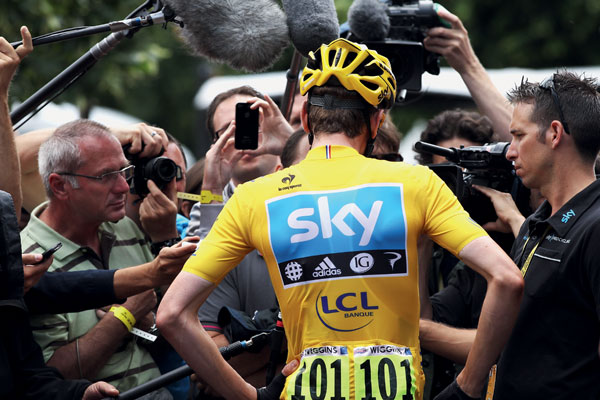
Tweets, reports, photos and video are disseminated instantly, making the narrative move even faster. Live text coverage complements live TV coverage as people are drawn together from across the globe to talk to each other via their computers about the race as it actually happens.
Insider view
It's not just the fans either. Of the 190 riders in the Tour peloton most will be on either Twitter, Facebook or Instagram and will post comments and pictures from their team bus or French hotels (the more decrepit they are the more likely they are to feature) after a stage. It's a speed, depth and breadth of coverage never imagined pre-internet.
Some of the stories of the 100th Tour will be familiar - for Anquetil versus Poulidor, read Froome versus Contador; others will be slightly different - the bright technicolour of Bobet's yellow jersey is now replaced by sepia-tinted Instagram pictures; and others will be entirely new - the Tour will visit Corsica for the very first time.
But one thing will not change: the Tour, 100 editions old, remains the biggest bike race in the world.
This article was first published in the June 20 issue of Cycling Weekly. Read Cycling Weekly magazine on the day of release where ever you are in the world International digital edition, UK digital edition. And if you like us, rate us!
Edward Pickering is a writer and journalist, editor of Pro Cycling and previous deputy editor of Cycle Sport. As well as contributing to Cycling Weekly, he has also written for the likes of the New York Times. His book, The Race Against Time, saw him shortlisted for Best New Writer at the British Sports Book Awards. A self-confessed 'fair weather cyclist', Pickering also enjoys running.